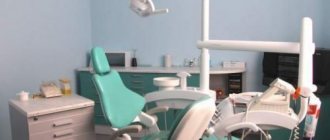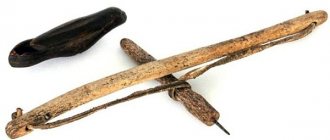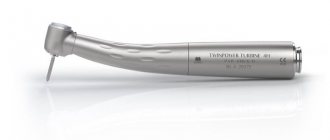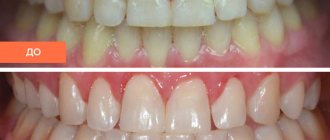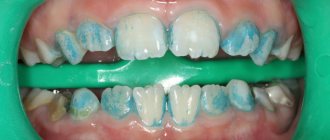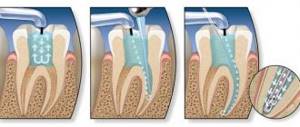Dental handpieces - from antiquity to the present day
HISTORY OF THE DEVELOPMENT OF DENTAL HEADS
The history of the appearance of dental handpieces as an independent instrument began in ancient times with a primitive bur.
The first preparation of a carious cavity with a primitive drill, which was a bow drill, was carried out in the Indus Valley, located in the territory of modern India and Pakistan. In 2001, archaeologists studying the remains of two men from Mehrgar, Pakistan, discovered that members of the Indus Valley Civilization had been drilling teeth since 7,000 BC. Eleven drilled molar crowns were found in nine adults whose remains were between 7,500 and 9,000 years old. The dental bow and drill were constructed in the same way as the bow and drill used to create fire - a stringed wooden bow tied to a rotating spindle, the only difference being that the spindle had a silicon head and was used as a drill, allowing it to penetrate the tooth. A dental handpiece is a tool that directly converts the energy of a compressed air flow, rotation of a micromotor or electric current into the corresponding movements of a working instrument (bur, endodontic file, scaler, etc.). Subsequently, doctors tried to create a tool that was suitable for preparing teeth, but the low level of technical progress and lack of knowledge did not give them a chance. It was only in the middle of the 14th century that progress was made in the creation of dental instruments.
DENTAL TIPS FROM THE 19th CENTURY
The prototype of a dental handpiece with a fixed steel bur can be considered an invention in 1864, made by the English doctor George Fallows Harrington. It was the first automatic drill, powered by a spring mechanism that wound up in two minutes. The bur speed reached 100 rpm, but the design was extremely inconvenient for the doctor.
In the early 70s of the 19th century, American dentist James Morrison patented a drill with a foot pedal drive, where the sleeve with the tip was put directly on the output shaft and the torque reached 2,000 rpm. It was this design that not only marked a revolutionary breakthrough in the development of dental equipment, but was also actively used in medical institutions in developed countries until the first quarter of the 20th century.
DENTAL TIPS IN RUSSIA IN THE XX CENTURY
In Russia in the 30s of the 20th century, with the active development of dentistry as a practical discipline, industry began to produce several types of dental machines in which the dental handpiece was already a separate part and performed the same functions as the most modern handpieces. Only the speeds are incomparable: straight and contra-angle handpieces of that time had a speed of 3,000 - 30,000 rpm, the turbine handpiece invented in 1957 reached 45,000 rpm and was in great short supply, and the modern turbine handpiece reaches 500,000 rpm.
DENTAL TIPS OF THE XXI CENTURY
In modern dentistry, various specialties use handpieces that can be divided into four types: turbine (FG), straight (HP), angled (RA), and special.
STRAIGHT DENTAL TIPS
Straight dental handpieces are low speed. A conventional handpiece paired with a micromotor provides a bur rotation speed of 1,000 - 30,000 rpm.
It is used for fitting dentures and their semi-finished products, cutting orthopedic structures, preparing teeth with an abrasive stone, shaped carborundum head, separation discs, for opening root canals on the upper front teeth using various burs.
Due to certain design features, they are most often used in surgical and orthopedic practice, as they allow significant pressure to be applied to the cutting tool without vibration. For comparison: the standard pressure on dentin for a steel bur at a rotation speed of 18,000 rpm is 500 g, and for a tungsten carbide bur at 450,000 rpm is 2 g.
ANGLED DENTAL TIPS
Contra-angle handpieces are also low-speed and have a wide range of bur rotation speeds, making them a versatile tool. Contra-angle handpieces are used by dentists of all specialties. Its shape is convenient for working in hard-to-reach areas of the oral cavity, it can withstand significant lateral loads without vibration and easily works with various cutting tools.
It is used for preparing the vestibular, lingual and contact surfaces of teeth using shaped heads, for preparing cavities in teeth for inlays, grooves for half-crowns, parapulpal canals for pins, for opening root canals in lower jaw teeth using diamond heads and carbide burs.
The following types of contra-angle tips are distinguished:
- Standard contra-angle handpiece with 1:1 gear ratio with bur rotation speed 1,000 - 40,000 rpm (blue marking)
- Overdrive contra-angle with 1:2 to 1:10 gears reaches speeds of 5,000 - 230,000 rpm (red marking)
- Reducing tips have a reduction number from 4:1 to 20:1 and a speed of 2,000 - 10,000 rpm (green marking).
Straight and contra-angle handpieces from all manufacturers have a standard micromotor mounting (ISO 9001).
According to the cooling system, angle and straight handpieces are:
- Without cooling - used extremely rarely and only for low speeds due to the risk of overheating and damage to enamel and dentin.
- With external cooling - used mainly in dental surgery.
- Internally cooled - used with air and electric micromotors and is the most common and effective type of cooling.
Lighting for contra-angle and straight handpieces:
- fiber optics
- built-in LED and light generator
TURBINE DENTAL TIPS
In clinical practice, turbine handpieces are most often used by dental therapists.
Turbine tips differ significantly from angled and straight tips in their technical characteristics. There are two main factors:
- High bur rotation speed, which is 150,000 - 500,000 rpm
- Low mechanical power, due to which increased force on the tip leads to a decrease in the speed of the bur and its possible stop, as well as to rapid wear of the rotor group.
Working with a turbine handpiece requires a certain skill and constant control of the pressing force, since excessive or insufficient force on the drill reduces the efficiency of cutting hard tissue.
Cooling
Since the rotation of the bur in the turbine handpiece occurs at enormous speed, the issue of cooling the tooth tissue is especially important. Serious damage may result if cooling is insufficient. Turbine tips of any price category are equipped with internal water-air cooling (spray). Economy class models have a 1-point spray, the middle class has a 3-point spray, and expensive models are available with a 5-point spray.
Connection Standards
The turbine tip can be directly screwed onto the mouthpiece of the installation hose or you can use a quick-release adapter to which the tip can be attached by simply snapping it into place. There are five standards for hose connections, the most common being the 2-channel Borden, 4-channel Midwest (non-illuminated), and 6-channel Midwest LUX with fiber optics. As a general rule, if you want to use quick-release adapters, then you need to buy them of the same brand with the tip.
Head dimensions
Turbine tips are available with heads of 3 sizes:
- Standard head - a universal model for therapeutic treatment
- Small head - designed for children's use and light work that does not require pressure on the bur. Slightly less power than standard
- Large head - mainly used in orthopedic practice, has increased power and bearings with a large margin of safety.
Lighting
Illumination of the working area is implemented in the same way as in straight and angled handpieces: through fiber optics or a built-in LED with a generator. The bur clamp is most often push-button, but inexpensive models may use a latch or a special key. Tips are available with ceramic and metal bearings. Ceramic bearings are more expensive and more durable, but with proper care, metal bearings are just as durable.
Our website presents dental handpieces from Russian and foreign manufacturers.
Dental burs used for finishing composites
Along with traditional types of carbide burs, NTI produces multifaceted burs
, the number of edges on which ranges from 8 to 30. These edges have a small height, so they are less aggressive when cutting.
Such burs are used for finishing the edges of enamel, grinding and polishing fillings made of composites and amalgams (final or finishing treatment), therefore they are usually called carbide finishers. The spiral design of the finishing edges ensures constant contact of the working part with the surface being processed, which reduces tool vibration and improves the quality of processing. The more edges a finish has, the lower its cutting ability and the higher the quality of polishing.
Currently, due to the development of direct restorative technologies, dentists' need for tools for fast and effective grinding and polishing of composites has increased.
Many dental schools recommend using carbide finishers for this purpose, giving them preference over diamond burs. These recommendations are based on the results of comparative scientific studies of the quality of finishing of composite restorations using fine-grained diamond burs and carbide finishers. One of the aspects of aesthetic dentistry
is the treatment of the gingival zone of the restoration at the point where the composite transitions into the hard tissues of the tooth.
This problem is undoubtedly relevant, since in approximately half of patients the marginal edge of the gums in the area of the front teeth is visible when smiling. In addition, the edge of the filling overhanging the gum is a traumatic factor, causing inflammation of the marginal periodontium and the development of localized periodontitis. Therefore, high-quality treatment of this area is not only an important factor in ensuring a harmonious combination of aesthetic restoration and healthy gingival margin, but also contributes to maintaining the patient’s overall dental health. To process the gingival areas of restorations, a very thin and at the same time effective and safe instrument is required. In this regard, in our opinion, carbide finishers with a non-aggressive top of the working part
“TDF” (Top Defined Finishing) are of interest.
TDF family
consists of 4 types of burs of three degrees of abrasiveness.
They have a working part length from 3 to 9 mm. The length of the working part of the TDF finishers allows you to cover the entire surface to be processed in one movement when grinding and polishing. This prevents the formation of steps and irregularities at the point of contact of the bur tip with the surface of the composite. 8-sided TDF finishers are marked with a red ring on the shank. They are designed to remove excess composite, giving the restoration surface its final shape. 16-sided TDF finishers are marked with a yellow ring on the shank. They are used for microcontouring and surface grinding of composite restorations. It should be noted that 16-sided finishers remove only minor irregularities, creating a smooth surface. An attempt to carry out macro-contouring of the restoration and remove excess composite leads to unproductive work, damage to the working part of the finish, and deterioration in the quality of the surface of the composite material. 30-point TDF finishers are marked with a white ring on the shank. They are used to finish and polish the surface of composite restorations to a high-gloss “dry shine.” These finishers practically do not remove the composite and do not damage the adjacent enamel
. In this regard, in a clinical setting, it is recommended to process restorations in stages: first, with 8-sided finishers until the required shape of the restoration is obtained, and then, successively with 16- and 30-sided finishers to achieve a “dry shine” and good marginal fit. An important feature of TDF finishers for dentists is the thinned, but rounded, safe end of the working head. Thanks to this design feature, these instruments allow efficient and safe processing of composite restorations in the subgingival area without trauma to the marginal gingiva and the circular ligament of the tooth.


